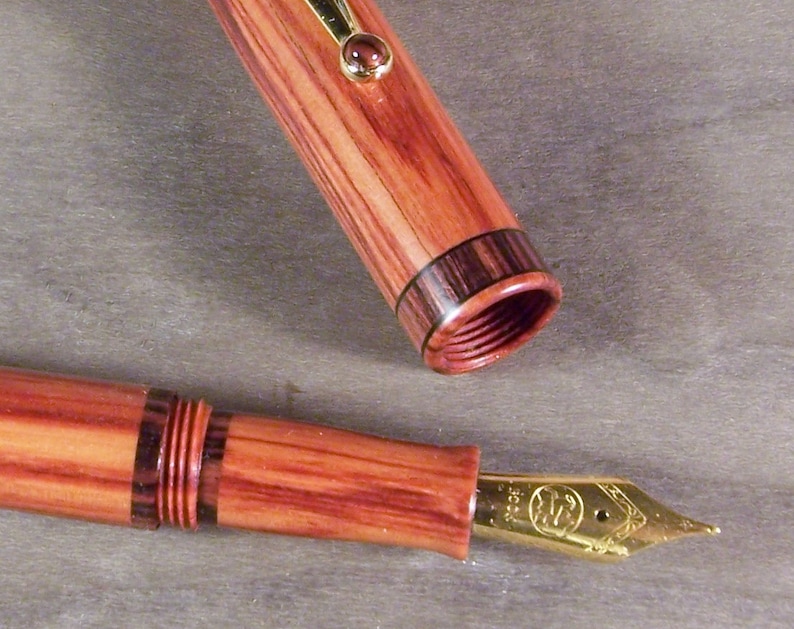Hardwood water fountain markers have long been enjoyed by writing aficionados for their beauty, toughness, and distinct character. Crafting these elegant writing instruments demands a deep-seated understanding of the materials made use of and the strict skill of skilled professionals. Coming from choosing the excellent lumber to molding and completing the marker, each measure in the method contributes to the development of a masterwork.
The 1st step in producing a timber fountain pen is selecting the excellent lumber. Various types of wood provide specific features, such as grain patterns and colours, which can easily greatly affect the final appearance of the marker. Typical timbers used for fountain markers include ebony, rosewood, maple, walnut, and olive hardwood. Each kind has its very own special charm that adds uniqueness to every pen.
Once the wood has been carefully chosen, it is opportunity to prepare it for molding. This involves reducing it in to workable sizes and removing any sort of infirmities or defects that may affect both its visual appeal and building honesty. Experienced craftsmen typically pay out close interest to protecting as a lot of the organic beauty of the timber as feasible throughout this phase.
Next happens shaping the pen body system. Utilizing precision devices such as lathes or sculpting blades, craftsmens meticulously form the wood space in to its wanted kind. This requires a constant hand and an eye for particular to ensure that every curve and shape is skillfully crafted. The specialists strive not merely for functions but additionally for artistic appeal in every part of their work.
After form happens sanding—a critical action that offers each wood fountain pencil its hassle-free surface. Starting along with coarse-grit sandpaper and advancing through finer grits, specialists diligently sand down any harsh edges or infirmities until they achieve a perfect surface on both external and indoor parts of the pen body system.
Read More Here to sanding happens sealing or finishing—another vital stage in generating wood fountain markers. A assortment of finishes might be administered relying on personal desire or the intended result. Some artisans choose to utilize organic oils, such as tung oil or linseed oil, to enhance the hardwood's all-natural beauty and secure it from dampness. Others opt for a varnish surface, which offers a shiny and heavy duty finishing that better improves the marker's look.
Once the timber has been shaped, sanded, and completed, it is time for assembly. The specialists carefully go with with each other all the elements of the pen—the nib, feed mechanism, converter or cartridge—to make certain smooth functionality and reliable performance. Attention to particular at this phase is crucial since even a slight imbalance may influence how properly the ink circulates onto the newspaper.

Eventually, each wooden water fountain marker undergoes rigorous high quality control action prior to being regarded ready for sale. Artisans examine every aspect of the pen—from its overall appeal to its writing performance—to guarantee that it fulfills their exacting requirements. Just then does each marker receive its mark of approval and become available to be held and cherished through discerning writers around the world.
The craftsmanship behind timber fountain pens is an art type that needs persistence, skill, and a deeper passion for developing gorgeous writing tools. From plant to pen, every measure in t